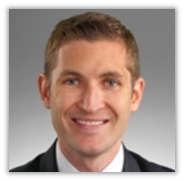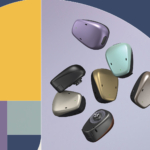This year marks the 5-year anniversary of the Cochlear™ Osia® System, with more than 25,000 implants placed globally—a testament to its growing impact and acceptance in hearing care. To celebrate this remarkable milestone, our Senior Product Portfolio Manager, Wendy Potts, spoke with one of the most experienced Osia System surgeons to explore how the technology is transforming patient care.

Fargo, ND — In this expert interview, Dr. Matthew Miller, fellowship-trained neurotologist at Sanford Health, discusses his experience with bone conduction hearing solutions, particularly the Cochlear™ Osia® System. With over 100 Osia System implantations performed, Dr. Miller offers insights into the surgical technique, patient selection and the evolving role of bone conduction in otologic practice.
Wendy: What led you to specialize in neurotology, and how has your practice evolved in Fargo?
Dr. Miller: My interest in neurotology developed during medical school at the University of Minnesota, where I was drawn to the complexity of inner ear pathology and the precision of microsurgery. I also enjoyed the relatively short timeline from intervention to subjective and objective outcomes. After completing my residency at Oregon Health & Science University and fellowship at Johns Hopkins, I joined Sanford Health in Fargo. I encountered a high volume of patients with chronic ear disease and conductive hearing loss—many of whom had never been offered surgical hearing rehabilitation. This population underscored the need for accessible, effective solutions like bone conduction implants.
Wendy: How do you approach patient selection for the Osia® System?
Dr. Miller: I prioritize patients with conductive or mixed hearing loss who are unable to benefit from conventional amplification—often due to chronic otitis externa, canal stenosis or anatomical limitations. I also consider patients with single-sided deafness (SSD), particularly those who are not yet candidates for cochlear implantation. While audiologic criteria guide candidacy, lifestyle factors are equally important. We routinely assess compatibility with hats, glasses and helmets to ensure long-term compliance.
Wendy: What distinguishes the Osia System from previous bone conduction devices?
Dr. Miller: The Osia System represents a significant advancement in transcutaneous bone conduction. Compared to percutaneous systems like the Baha® Connect System, Osia offers improved aesthetics, reduced risk of skin complications and superior sound quality via piezoelectric stimulation. Patients appreciate the discreet profile and comfort. From a surgical standpoint, the implant is well-tolerated, with minimal soft tissue disruption and a predictable operative course.
The Osia System with the OSI300 implant and piezoelectric transducer also enables MRI compatibility up to 3.0 T with no performance degradation1,2,3, setting it apart from traditional electromagnetic transducers.
Wendy: Can you describe your surgical workflow and any technical “pearls”?
Dr. Miller: The procedure typically takes 45 minutes under general anesthesia. I use a postauricular incision and ensure precise placement of the actuator relative to the external processor. Preoperative planning includes marking the optimal site based on patient anatomy and accessory use. I advise colleagues to involve audiologists early—especially for processor mapping and postoperative counseling. Intraoperative efficiency and interdisciplinary coordination are key to successful outcomes.
Wendy: What outcomes have you observed, and how do you measure success?
Dr. Miller: We’ve seen excellent audiologic outcomes and high patient satisfaction. One memorable case involved a man in his 30s with bilateral canal stenosis who had never used amplification. Post-Osia System, he described the device as “life-changing.” Success isn’t just audiometric—it’s functional. We assess speech perception, device usage and quality-of-life metrics. Insurance coverage has improved, which helps broaden access.
Wendy: What do you see on the horizon for bone conduction technology?
Dr. Miller: I anticipate further miniaturization, improved battery life and rechargeable options. Expanded indications—particularly for SSD and pediatric populations—are likely. I also hope to see more general otolaryngologists adopt bone conduction surgery. You don’t need to be a neurotologist to perform Osia System implantation, but you do need to understand the full spectrum of hearing solutions to counsel patients effectively.
Wendy: Any final thoughts for surgical colleagues and audiology partners?
Dr. Miller: Bone conduction is no longer niche—it’s integral to modern hearing rehabilitation. Surgeons should feel confident incorporating it into their practice, and audiologists play a critical role in patient education and device management. Together, we can offer patients solutions that restore not just hearing, but independence and connection.
Join thousands of hearing professionals who are transforming lives with the Cochlear™ Osia® System. Visit our website to access clinical resources, surgical guides and audiology tools that support successful outcomes—from candidacy to activation and beyond.

Matthew Miller, MD
Dr. Milller is a board-certified Neurotologist and Otolaryngologist at Sanford Health in Fargo, North Dakota. He specializes in complex ear and skull base conditions. He completed medical school at the University of Minnesota and went on to Otolaryngology residency at Oregon Health and Science University in Portland, OR. A North Dakota native, he returned to Sanford Health in Fargo following completion of a fellowship in Neurotology at the Johns Hopkins School of Medicine in 2014. Dr. Miller provides expert care for both adults and children, focusing on management of chronic ear disease, cochlear implantation, bone conduction hearing implants, and other otologic and skull base conditions. Dr. Miller is affiliated with multiple hospitals including Sanford Medical Center Fargo and Sanford USD Medical Center, providing services encompassing a wide geographic region.

Wendy Potts, Au.D, Senior Product Portfolio Manager
Wendy Potts, Au.D., is a Senior Product Portfolio Manager at Cochlear Americas. She has extensive clinical experience as a cochlear implant audiologist and in her many years with Cochlear, has worked in research, post market surveillance, clinical training, and product management of Connected Care products and services. In her role as Senior Product Portfolio Manager, Wendy is responsible for leading the planning and development of the commercial strategy for Cochlear’s future product portfolio.
1 Goh J. OSI200 Implant MRI Safety Verification Report. D1439962. Cochlear Bone Anchored Solutions AB, Sweden
2 Technical Brief – Reliability: Cochlear™ Osia® OSI300 Implant . D1991745. Cochlear Limited
3 Cochlear™ Osia® Magnetic Resonance Imaging (MRI) Guidelines. D1906375. Cochlear Limited
Views expressed are those of the individual. Consult your hearing health provider to determine if you are a candidate for Cochlear technology. Outcomes and results may vary.

